The Tourism-Friendly Cities Manifesto: 10 principles on how cities can make the impact of tourism more sustainable
Edited on
02 August 2022The final report of the URBACT network on the impact of tourism gives useful indications to European cities which are working on making tourism more sustainable at different dimensions. Takeaways from the experience of the partners and interesting suggestions for policy-makers at European, national and local level
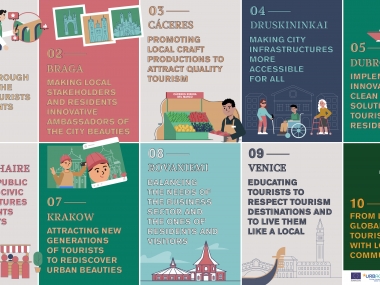
The journey of Tourism-Friendly Cities has come to an end, but the issues raised by the experience carried out by the partners of the network on sustainable impact of tourism are pressing in a time of global recovery of the tourism sector.
That is the main reason that pushed the network to develop ten principles which may be implemented or replicated by other cities at European and global level, in order to make the recovery of the sector more sustainable and fair for all the actors involved, such as tourists, business representatives, public authorities and local communities.
In view of the launch of the Partnership on Sustainable Tourism of the Urban Agenda for the EU, the principles developed by Tourism-Friendly Cities can serve as basis for continuing the debate on the topic in the next few years, inspiring other local authorities to develop integrated strategies and innovative actions following the milestones experienced by the partners of the URBACT network.
Here are the points of the Manifesto, officially presented at the occasion of the final conference held in Venice on 30th and 31st May 2022, developed by the cities of Tourism-Friendly Cities taking inspiration from the Integrated Action Plans and the Small-Scale Action developed and implemented in collaboration with the stakeholders of the respective URBACT Local Groups.
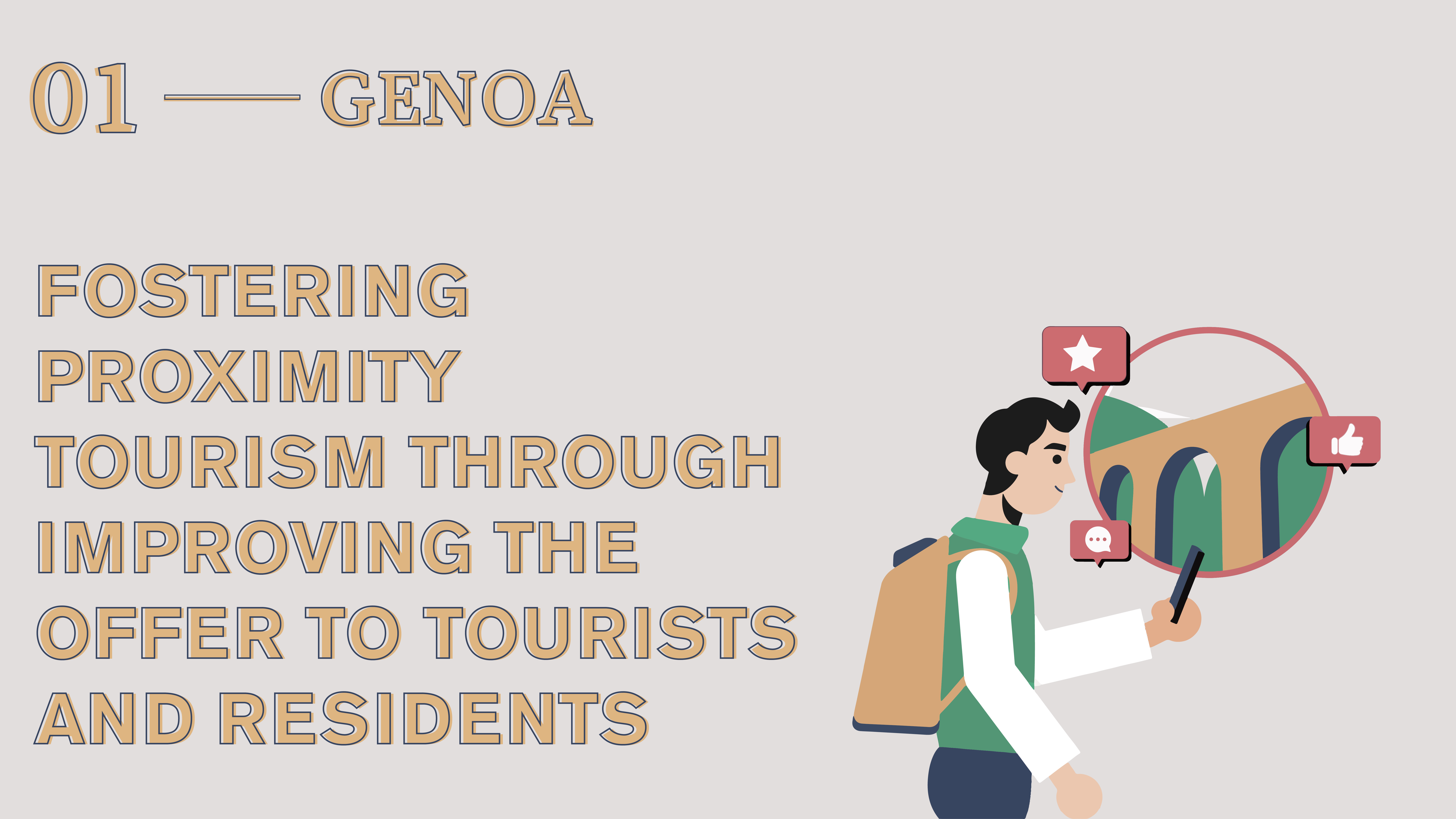 Principle 1: Fostering proximity tourism through improving the offer to tourists and residents
Principle 1: Fostering proximity tourism through improving the offer to tourists and residents
The development of new services and itineraries for tourists and residents was a need emerged in the first phase of the Covid-19 pandemic, with the objective of restarting tourism from proximity even though international travel limitations were still adopted by the majority of the countries.
This set of measures, which can be reconnected to the global debate on staycation or proximity tourism, had an unexpected success in many cities around Europe and became the basis for reorienting the offer to tourists and residents, leading to the creation of new itineraries in less crowded places.
Having promoted itself as a destination for short city-breaks in the last decade, Genoa started to promote the discovery of places which have never been considered as possible destinations for holidays or weekends off. In the aftermath of the pandemic, Genoa is pursuing the creation of new outdoor paths for reducing the concentration of tourists in the city centre and, at the same time, to let them discover three routes along the historical aqueduct with sustainable modes of transportation (by walking, lift or bus).
The creation of new outdoor routes for tourists is just one of the possible examples of proximity tourism, which gives the opportunity to discover hidden gems and to promote a better knowledge of the main local assets by the local community.
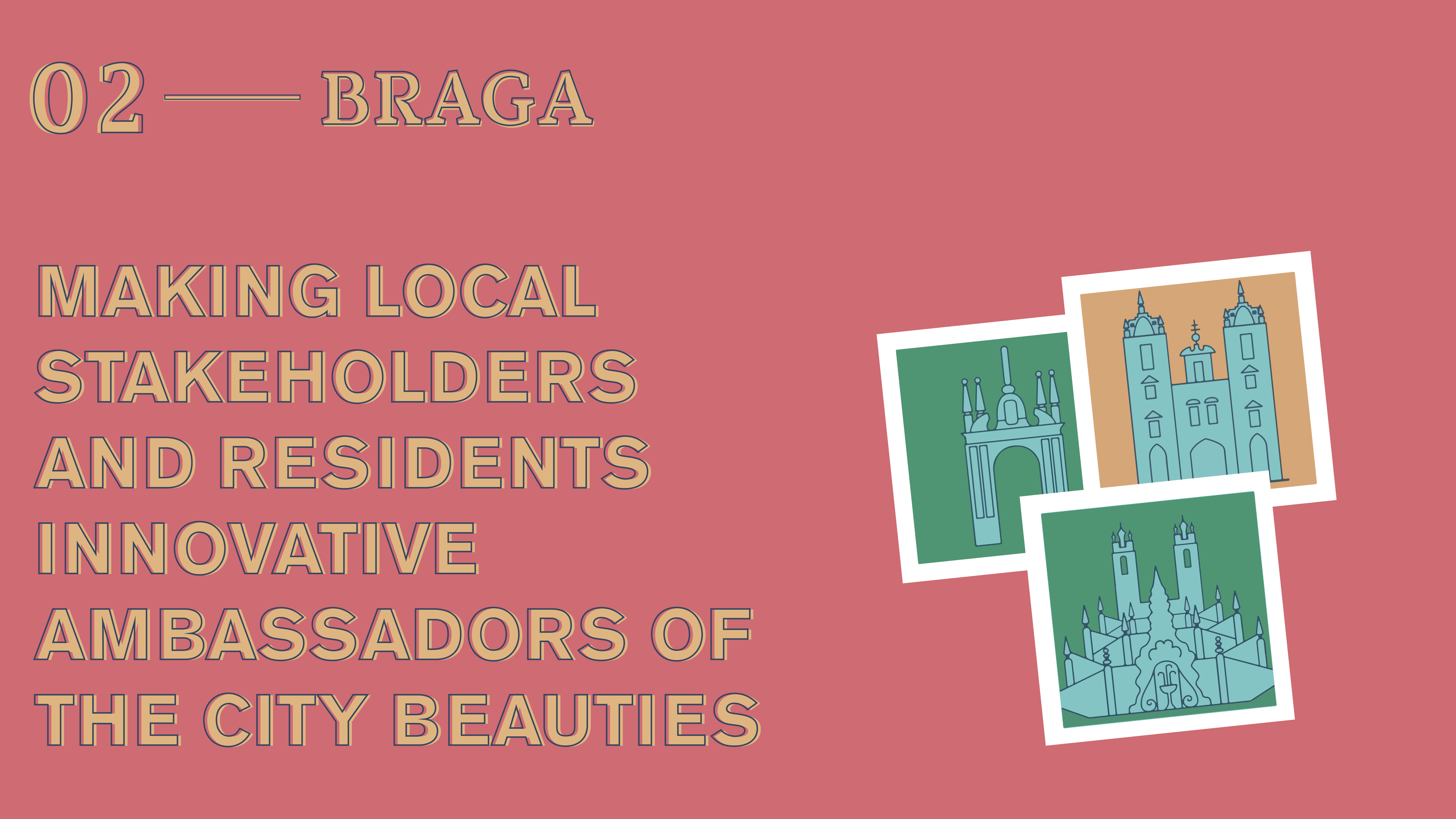 Principle 2: Making local stakeholders and residents innovative ambassadors of the city beauties
Principle 2: Making local stakeholders and residents innovative ambassadors of the city beauties
Tourism promotion strategies are often developed without taking into account the added value that local communities can bring in. Business owners, innovators, residents possess a wealth of stories and knowledge that can be used for making tourism promotion more inclusive and sustainable, but at the same time can be transferred to tourists giving value to the history of the city and its human capital.
Fostering a sense of ownership of city beauties is fundamental for creating a community spirit which is a decisive element for tourism promotion, but it can also contribute to preserve the authenticity of the tourism offer and local traditions as distinctive element in a competitive global market.
Animated by the need of increasing residents’ awareness of the growing importance of tourism for the local economy, Braga launched an original initiative called “Enjoy the city like a tourist” open to local community members, entrepreneurs and innovators who took part in immersive guided tours around the city to discover different corners of Braga are experienced by the tourists.
the touristic appeal of a city is the first step for improving services and activities, making them more sustainable and accessible for all. Cultural heritage, gastronomy and craftsmanship are almost everywhere in Europe key points for tourism recovery, especially when local communities develop around them a genuine sense of pride.
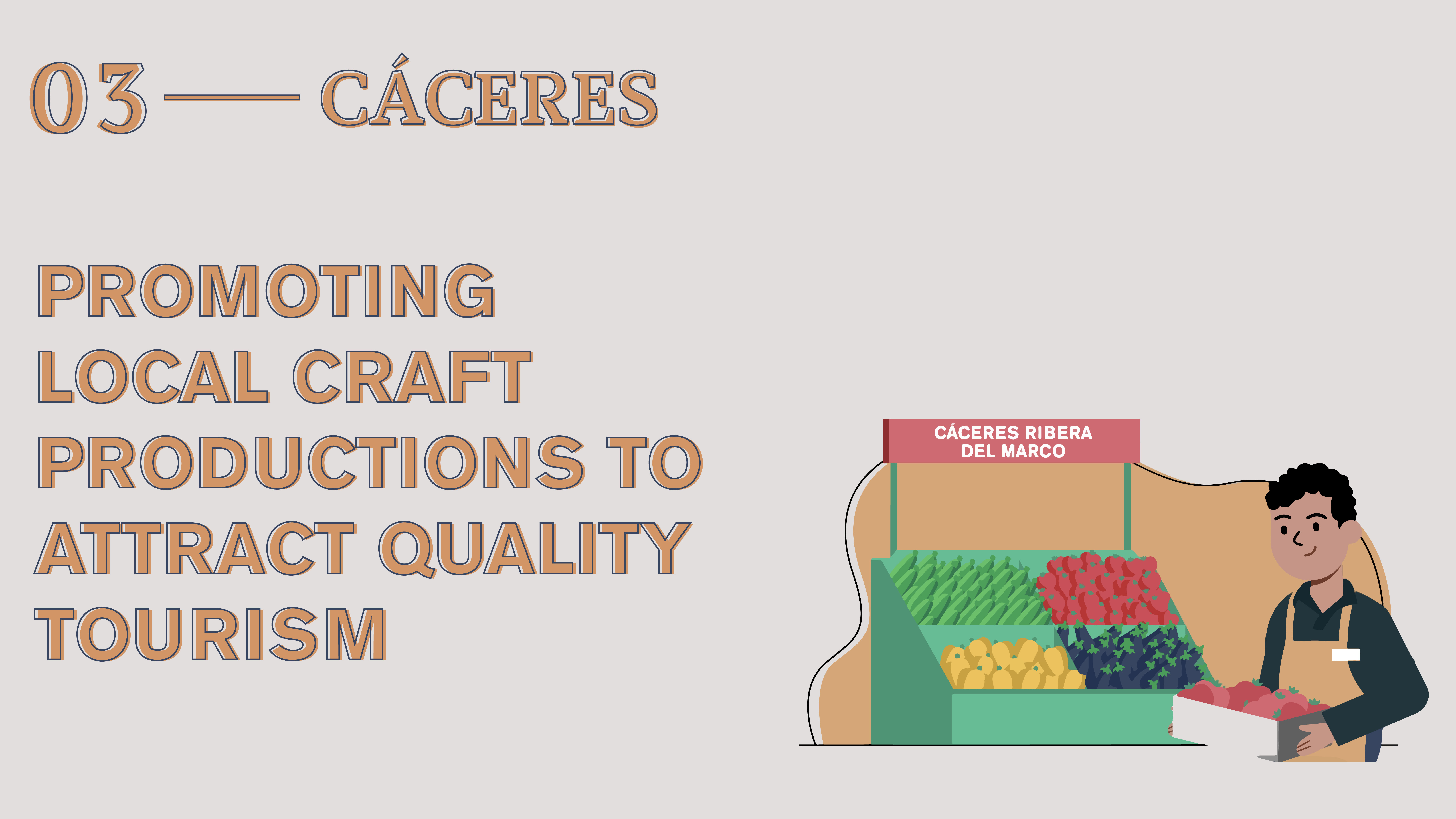 Principle 3: Promoting local craft productions to attract quality tourism
Principle 3: Promoting local craft productions to attract quality tourism
Local craft productions are often part of the local identity, representing not only a powerful sector of the local economy but also a shared value for the local community.
Artisanal products or food specialities are often the core attraction in local markets and commercial streets, and can be also used for promoting innovative forms of collaborative regeneration of public spaces.
Taking inspiration from the global movement of the farmers’ markets, Caceres launched once a month a new retail marketspace called Biomarket in the Ribera del Marco area, with the objective of raising the knowledge on local products and attract new visitors. The farmers’ market rapidly became a point of reference for local and regional visitors, contributing to revitalize an area which is at the core of multiple projects.
Healthy food can be driver of a shared commitment on social and environmental sustainability. Consolidating temporary initiatives into permanent marketplaces can improve the offer for tourists but can also create new economic opportunities for the urban and rural communities.
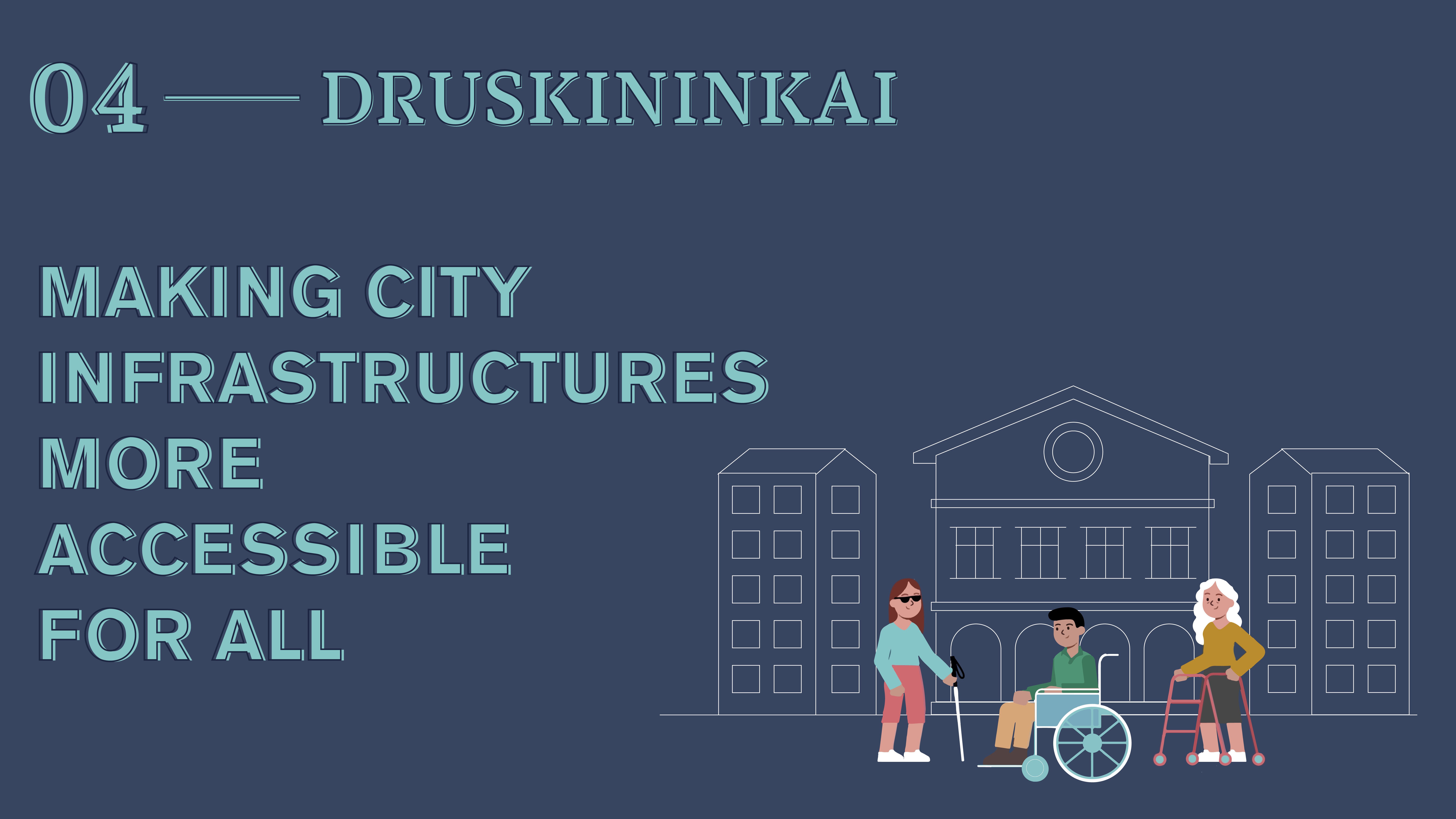 Principle 4: Making city infrastructures more accessible for all
Principle 4: Making city infrastructures more accessible for all
Public spaces and tourism attractions are often not accessible for elderly persons or people with disabilities, making the tourism experience less enjoyable for families and groups. Rethinking the design of tourism infrastructures is crucial for increasing social, economic and environmental sustainability and for meeting the needs of different types of visitors.
Improving infrastructures of coastal and spa destinations, fostering the regeneration of streets and squares, but also organizing gatherings and sport activities in green spaces can be crucial for making tourism part of active ageing strategies, testing new solutions for developing new types of tourism.
Committed to improving its international branding strategy as a modern spa destination, Druskininkai organized a pilot event called “Druskininkai without limits?”, involving a group of tourists with movement disabilities in tours and activities that helped the city to collect feedbacks on the quality of public spaces and infrastructure, and useful inputs on how to make them more accessible for all.
The development of innovative financial schemes for improving the accessibility of public and private facilities is a challenge for making the action of adaptation more sustainable, but also for creating a shared awareness of the challenges related to inclusive and accessible tourism.
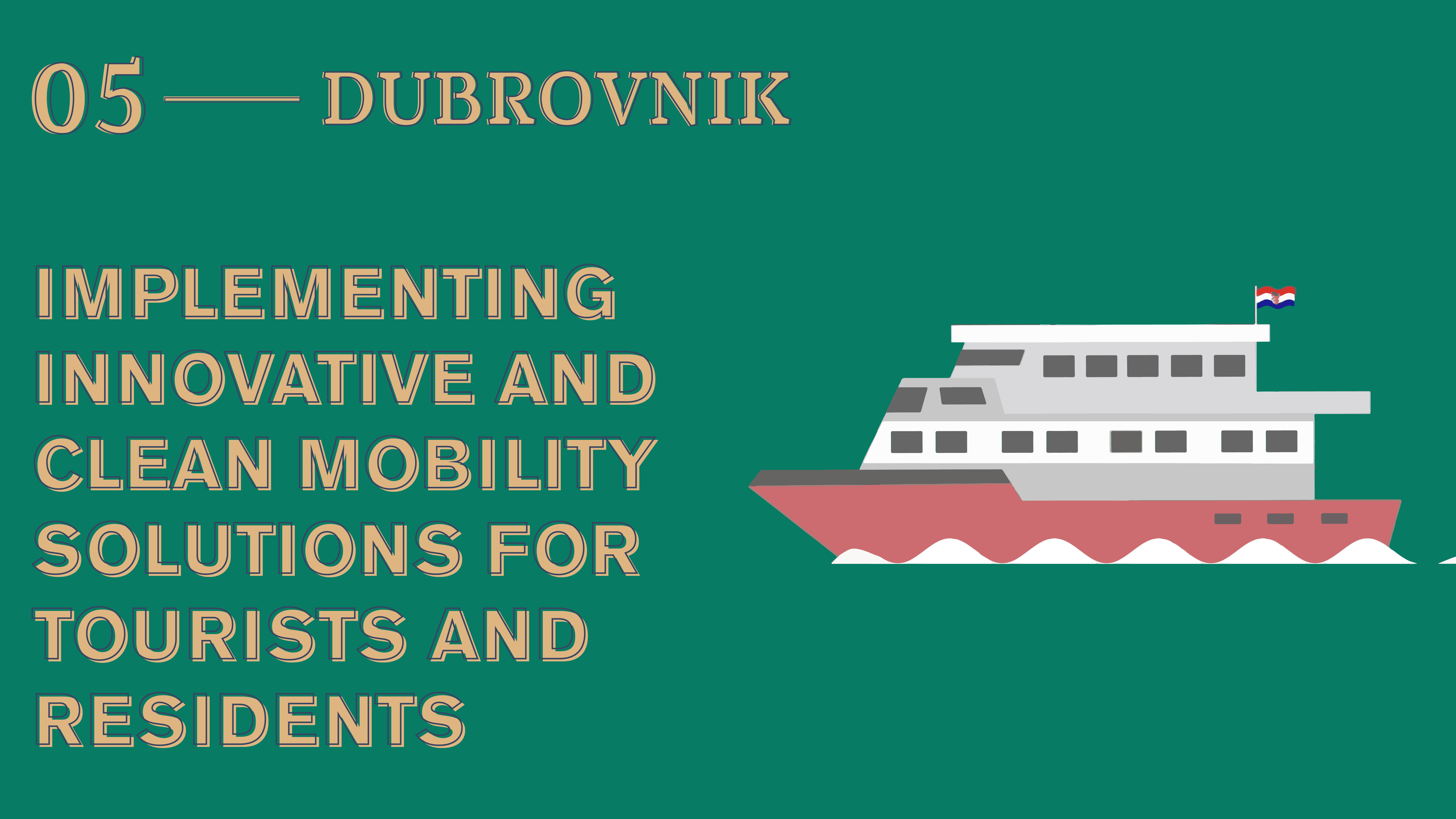 Principle 5: Implementing innovative and clean mobility solutions for tourists and residents
Principle 5: Implementing innovative and clean mobility solutions for tourists and residents
Tourism has a strong impact on transport infrastructures and solutions, which are responsible for a considerable part of the emissions of the sector at urban level. Reducing the impact of mobility on tourism destination can improve the quality of the public spaces and, more in general, of the experience for residents and visitors.
The investment on alternative routes or on the use of sustainable modes of transportation can be crucial for destinations which are trying to limit the impact of huge crowds of tourism in historical city centres, while preserving a good quality of services for residents all the year round.
After having introduced smart measures for limiting the number of tourists acceding every day to the Old Town, Dubrovnik tackled mobility issues and quality of life with a series of actions within the umbrella programme Respect the city. Among the actions tested, the introduction of a new boat route connecting the port to the Old Town contributed to integrating maritime transportation in regular public transportation system.
Improving the offer of mobility services for tourists and residents can be fundamental for reducing the environmental impact of tourism, but also for creating a shared culture of sustainability leading to promote the respect for the touristic cities.
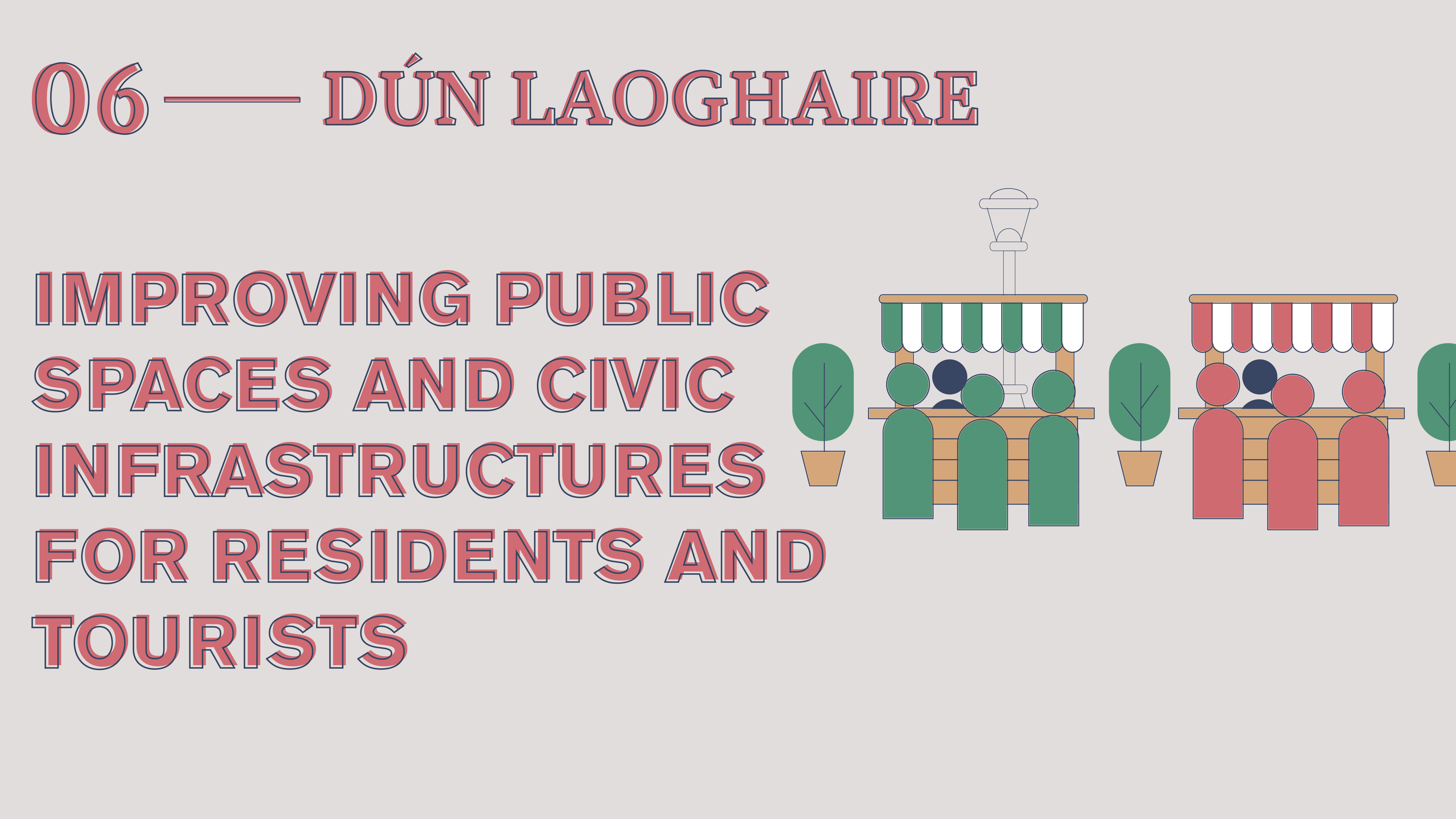 Principle n.6: Improving public spaces and civic infrastructures for residents and tourists
Principle n.6: Improving public spaces and civic infrastructures for residents and tourists
Streets and squares of our cities are decisive spaces for the everyday experience of tourists and residents. Keeping them clean and well managed can improve the overall quality of life in an urban context, and how the city is perceived at international level.
After the pandemic, the effective management of public spaces is crucial for increasing the sense of safety, but also for creating new opportunities for business and cultural activities.
Enhancing the level of connectivity between the coastal villages and the neighbouring Dublin was one of the main challenges in terms of sustainable impact of tourism for Dun Laoghaire, which tested the development of the coastal mobility cycle route and the enhancement of Blackrock Village. Residents and business owners were involved in a participatory scheme which led to the creation of new civic infrastructures and to the consolidation of new services and spaces for residents and tourists.
Repurposing the road space, making it more liveable and attractive, is a shared priority for many cities in Europe which are now consolidating temporary changes implemented in the first phase of the pandemic. The creation of safer and more attractive public spaces can be an important legacy for the future social, economic and environmental development of our communities.
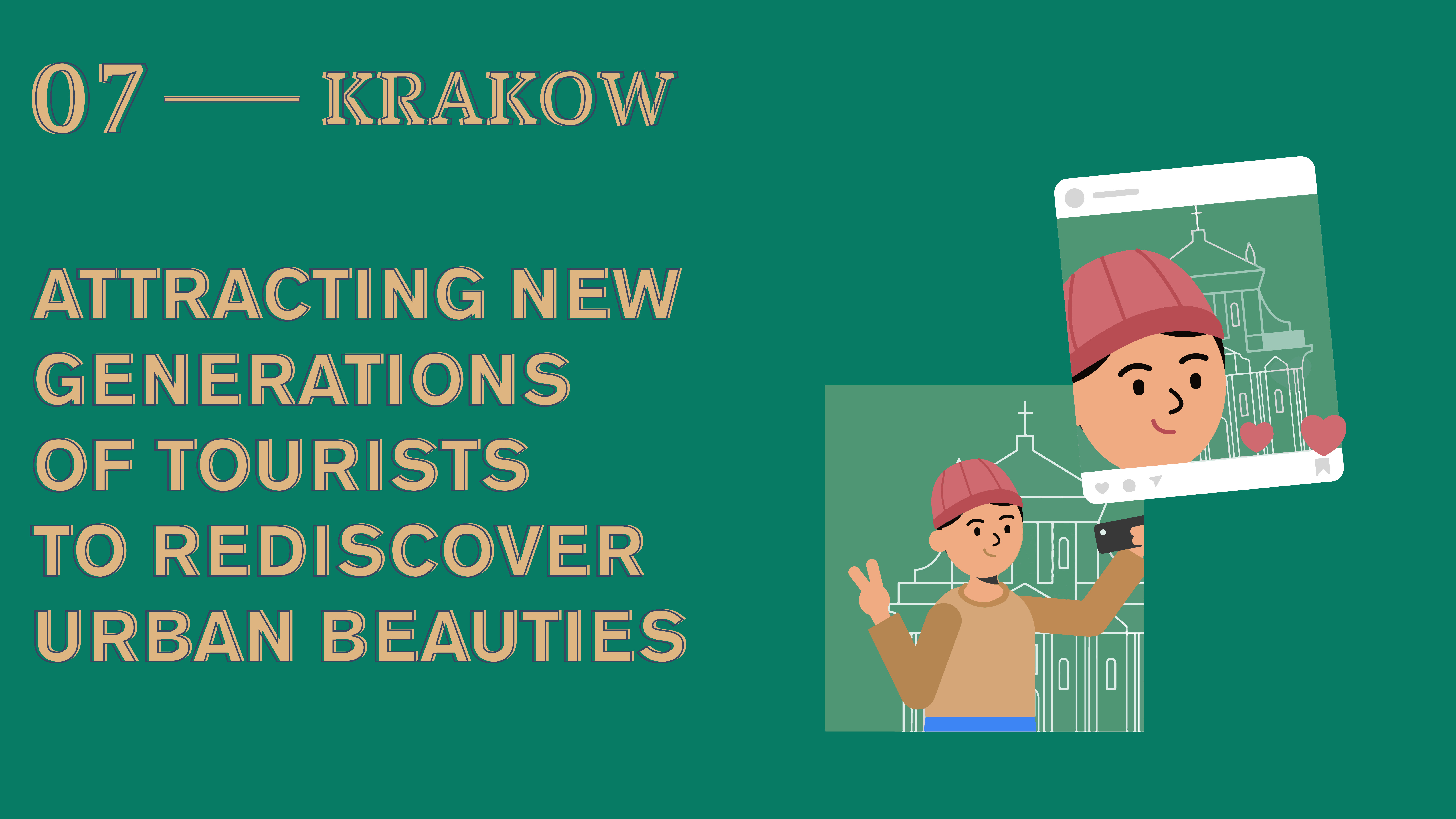 Principle 7: Attracting new generations of tourists to rediscover urban beauties
Principle 7: Attracting new generations of tourists to rediscover urban beauties
Educating the tourists of the future is an important challenge for tourism destinations. It is not just a matter of creating instagrammable services and activities, but also of developing curiosity and taste for discovery.
Hidden corners of the cities can stimulate the passion for local history, making young explorers more conscious of the urban beauties and potential responsible and sustainable tourists in the future.
With the objective of diversifying its offer for different types of tourists, Krakow invited city residents of different age groups to join guided tours through unusual places of the city. The initiative supported the idea of being a tourist in your city, and promoted the development of user generated contents on social media for promoting Krakow as an interesting destinations for different types of tourists.
Fostering the use of social media platforms for making urban contents viral or for developing useful guides with tips for tourists and residents can create new types of cooperation among tourists, professionals and residents with the creation of new contents and services with a global visibility.
 Principle 8: Balancing the needs of economy, society and nature
Principle 8: Balancing the needs of economy, society and nature
Nature is the core infrastructure of tourism for many destinations in Europe. Tourism experiences need to be respectful of the environment, balancing the needs for economic growth and conservation of natural resources.
Nature tourism can also complement urban tourism, with year-round activities that need to be well designed, developed and advertised to different types of visitors.
With the objective of safeguarding Arctic ecosystem from the mass tourism, Rovaniemi developed a series of online trainings called “TourismABC” for tourism operators in order to strengthen entrepreneurs' understanding of local conditions and practices. Concrete indications on safety, waste disposal and recycling are delivered to tourism operators, in order to raising the awareness on the fragile Arctic ecosystem and get them committed to sustainable development.
Mitigating climate change through reducing the impact of tourism is a challenge shared by many urban and rural areas around Europe: the active involvement of communities and business sector can be decisive for strengthening social, cultural and economic benefits of tourism if developed in an harmonic way with the surrounding environment.
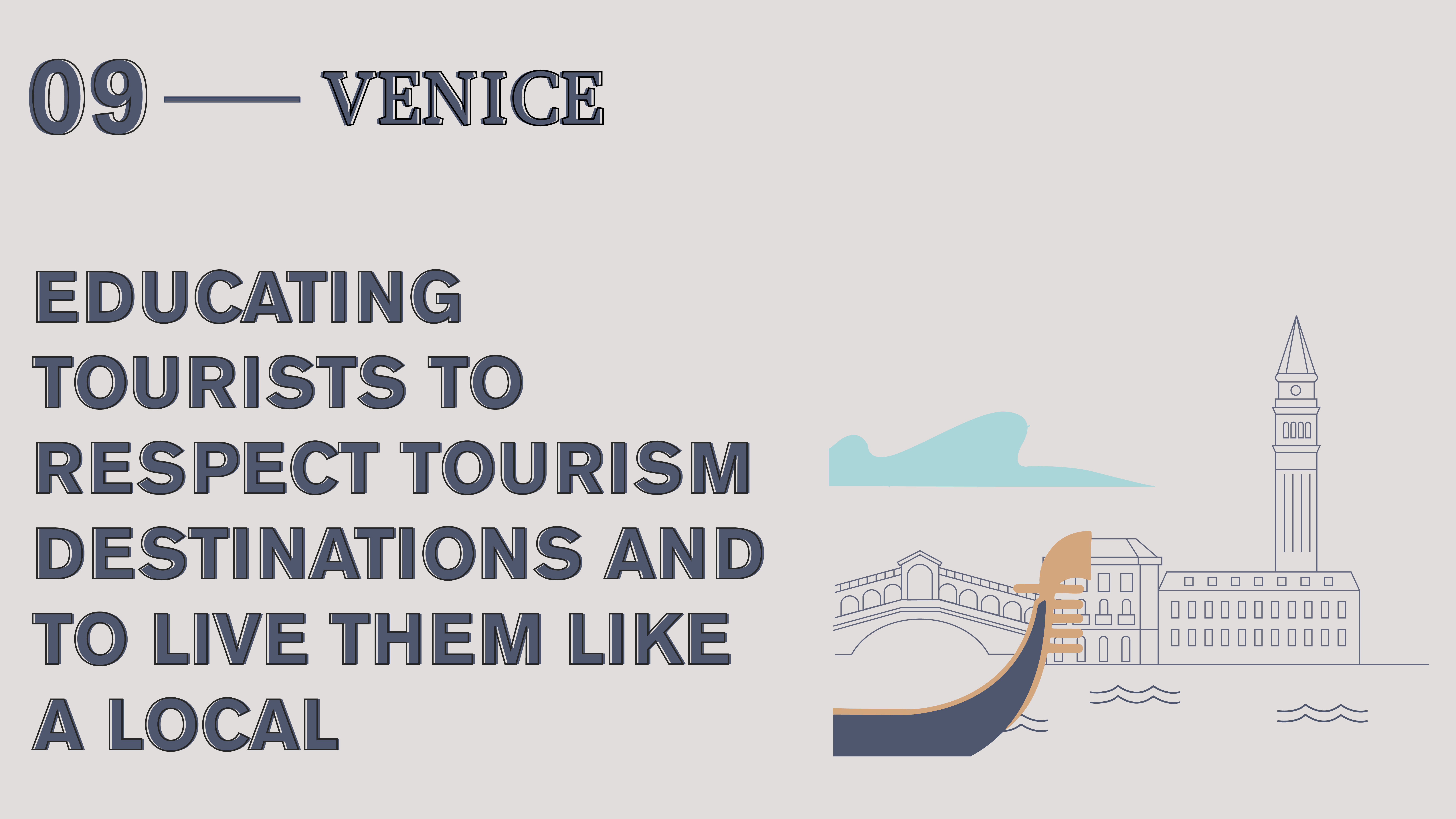 Principle 9: Educating tourists to respect tourism destinations and to live them like a local
Principle 9: Educating tourists to respect tourism destinations and to live them like a local
Living a tourism destination as a local is an ambition for many tourists, but not for all. Mass tourism often doesn’t care of how the city is inhabited and experienced everyday by its residents, with their rituals and habits that hardly fit with the needs of the tourists.
Creating authentic tourism experiences, which give value also to original aspects of the urban life as experienced by the locals, is a need shared by many cities around Europe willing to create an original balance between the needs of the tourists and the ones of the residents.
With the objective of sharing city’s uniqueness and authenticity, Venice launched a communication campaign for changing tourists’ perception on the phenomenon of high tide. The campaign provided clear information on this natural phenomenon and the conduct to follow in case of flooding emergency.
Improving the quality of the information delivered to tourists, offering them useful insights to experience the city life in an original and authentic way, is fundamental for raising the quality of the offer and creative alternative tours and activities for tourists.
 Principe 10: From local to global: planning tourism recovery with local communities
Principe 10: From local to global: planning tourism recovery with local communities
The active involvement of the local communities is crucial for tourism recovery, everywhere. Involving residents, stakeholders and innovators in the definition of tourism destination strategies is particularly important for tackling all the challenges emerged after the Covid-19 pandemic.
The impact of tourism on environment, public spaces, housing, mobility systems and local economy needs to be harmonized and made sustainable through the use of collective intelligence, which makes local community decisive for developing practices at different levels.
At the same time, cities need to reinforce their ties with other local authorities at international level, in order to take inspiration from innovative solutions but also for influencing the future of the sector and how cities deal with global private players.
Developing innovative initiatives in terms of governance, such as the consolidation of the URBACT Local Groups into permanent Observatories on sustainable impact of tourism or connecting the development of integrated tourism strategies to localizing SDGs implementation and international relations and branding activities, can be crucial for making sustainable tourism a cross-cutting topic in the local political agendas around Europe.
Simone D'Antonio - Ad Hoc Expert Tourism-Friendly Cities
Submitted by Sabrina Bruzzone on
